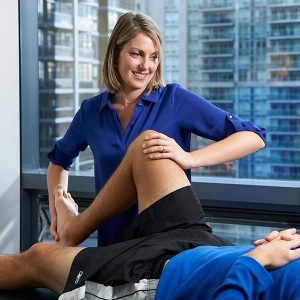Flexibility is one of the most important aspects of physical health, yet it’s often overlooked in our daily routines. Whether you’re recovering from an injury, dealing with muscle stiffness, or simply looking to move with greater ease, improving flexibility can make a big difference. Physiotherapists often recommend targeted exercises to increase your range of motion, reduce tension, and support overall mobility.
In this article, we’ll explore why flexibility matters and share physiotherapy-approved exercises that can help you loosen tight muscles and move better every day.
Why Flexibility is Important for Your Health
Flexibility refers to the ability of your joints and muscles to move through their full range of motion without pain or restriction. Good flexibility can:
-
Prevent injuries by reducing strain on muscles and joints.
-
Improve posture and alignment, especially if you sit for long hours.
-
Enhance performance in sports and daily activities.
-
Ease muscle tension and reduce aches and stiffness.
When you visit a clinic for Physiotherapy Abbotsford, one of the first things a therapist may assess is your flexibility. This helps them design an exercise plan that improves both mobility and strength in a safe and gradual way.
Top Physiotherapy Exercises for Better Flexibility
Here are some simple yet highly effective physiotherapy exercises you can do at home to increase flexibility. Remember to warm up your muscles with light movement (like walking or arm swings) before stretching, and never push into pain.
1. Hamstring Stretch
Targets: Back of the thighs
-
Sit on the floor with one leg extended and the other bent inward.
-
Keeping your back straight, lean forward toward the extended leg until you feel a gentle stretch in the hamstring.
-
Hold for 20–30 seconds, then switch sides.
This is often recommended in physiotherapy programs to relieve tightness caused by prolonged sitting.
2. Hip Flexor Stretch
Targets: Front of the hips
-
Kneel on your right knee with your left foot in front (like a lunge).
-
Gently push your hips forward while keeping your upper body upright.
-
You should feel a stretch at the front of the hip and thigh. Hold for 30 seconds, then switch sides.
Tight hip flexors are a common issue addressed in Physiotherapy Abbotsford, especially for people who spend long hours sitting at desks.
3. Cat-Cow Stretch
Targets: Spine flexibility
-
Start on your hands and knees.
-
Inhale as you drop your belly, lifting your chest and tailbone (Cow).
-
Exhale as you round your spine, tucking your chin to your chest (Cat).
-
Repeat for 8–10 slow repetitions.
This dynamic stretch is excellent for spinal mobility and is often part of warm-up routines in physiotherapy.
4. Calf Stretch
Targets: Lower legs
-
Stand facing a wall with one foot forward and one back.
-
Keep your back leg straight, heel on the floor, and lean into the wall.
-
Hold for 20–30 seconds, then switch sides.
Improving ankle and calf flexibility helps prevent injuries and supports smooth walking or running movements.
5. Shoulder Stretch
Targets: Shoulders and upper back
-
Bring your right arm across your chest.
-
Use your left hand to pull the right arm closer to your body until you feel a stretch in your shoulder.
-
Hold for 20 seconds, then switch arms.
This is especially useful for office workers and those recovering from shoulder injuries.
Tips for Safe Stretching
-
Warm up your muscles before stretching to avoid injury.
-
Breathe deeply and relax into each stretch.
-
Hold stretches for 20–30 seconds and repeat 2–3 times per side.
-
Never bounce or force a stretch—it should feel gentle, not painful.
If you’re unsure where to start or have existing injuries, consulting a physiotherapist is highly recommended. Clinics offering Physiotherapy Abbotsford can create a personalized flexibility program suited to your needs and goals.
How Physiotherapy Helps Improve Flexibility
A physiotherapist doesn’t just prescribe stretches—they assess your movement patterns, identify tight or weak areas, and design exercises to restore balance. Techniques like:
-
Manual therapy (hands-on techniques to release tight muscles)
-
Myofascial release (reducing tension in connective tissues)
-
Guided stretching programs
-
Strengthening weak muscles (to support flexible joints)
…can all be part of an effective plan to improve flexibility and prevent recurring stiffness.
At Physiotherapy Abbotsford, many clients are surprised by how quickly they notice improvements in their range of motion and overall comfort with the right approach.
Conclusion: Move Freely, Live Better
Incorporating flexibility exercises into your daily routine is a simple yet powerful way to support your body. With guidance from a physiotherapist, you can target problem areas, release muscle tension, and improve mobility safely.
Start with the stretches above, and if you have pain or stiffness that doesn’t improve, consider consulting a professional for tailored advice. The team at Physiotherapy Abbotsford can help you regain your flexibility and confidence in movement.





